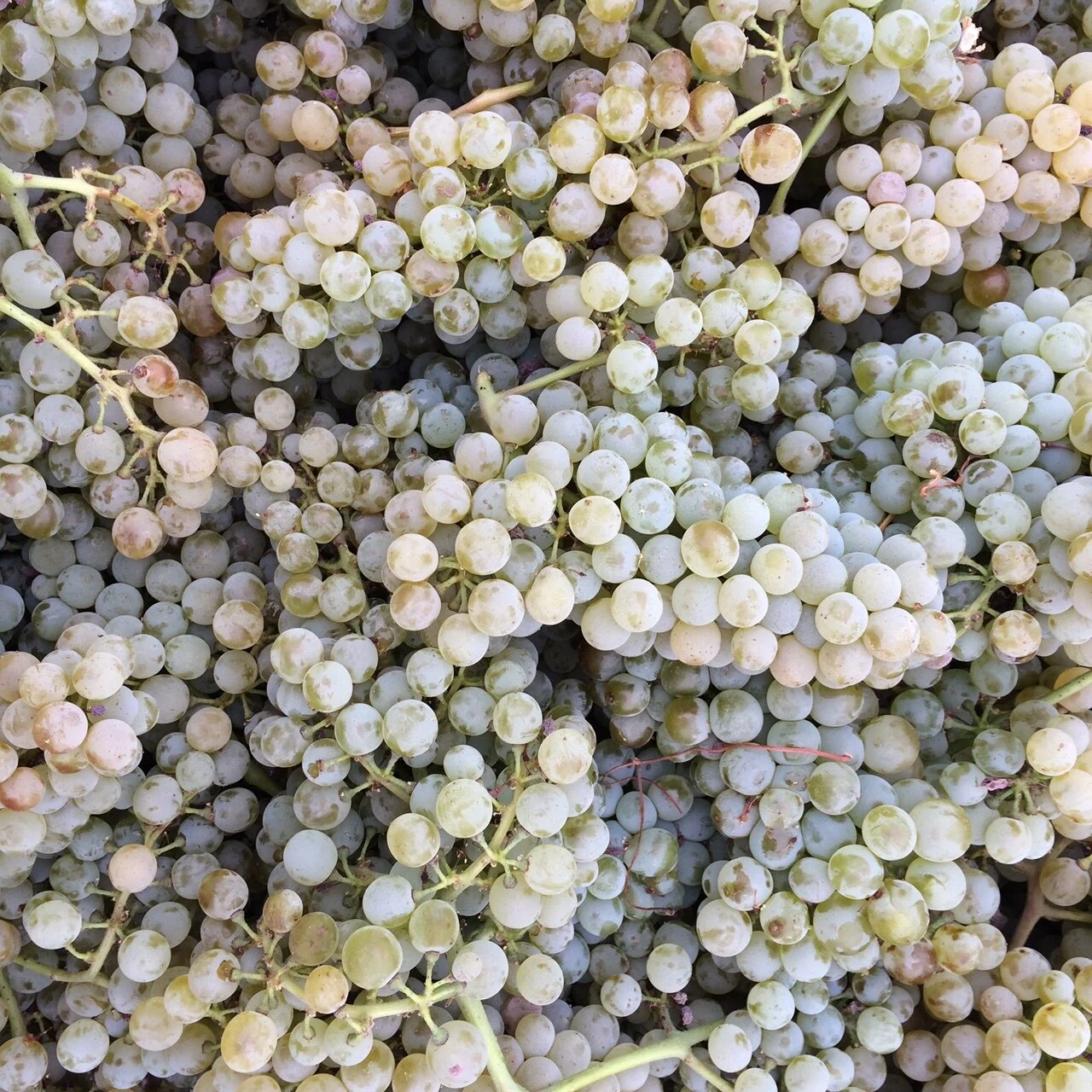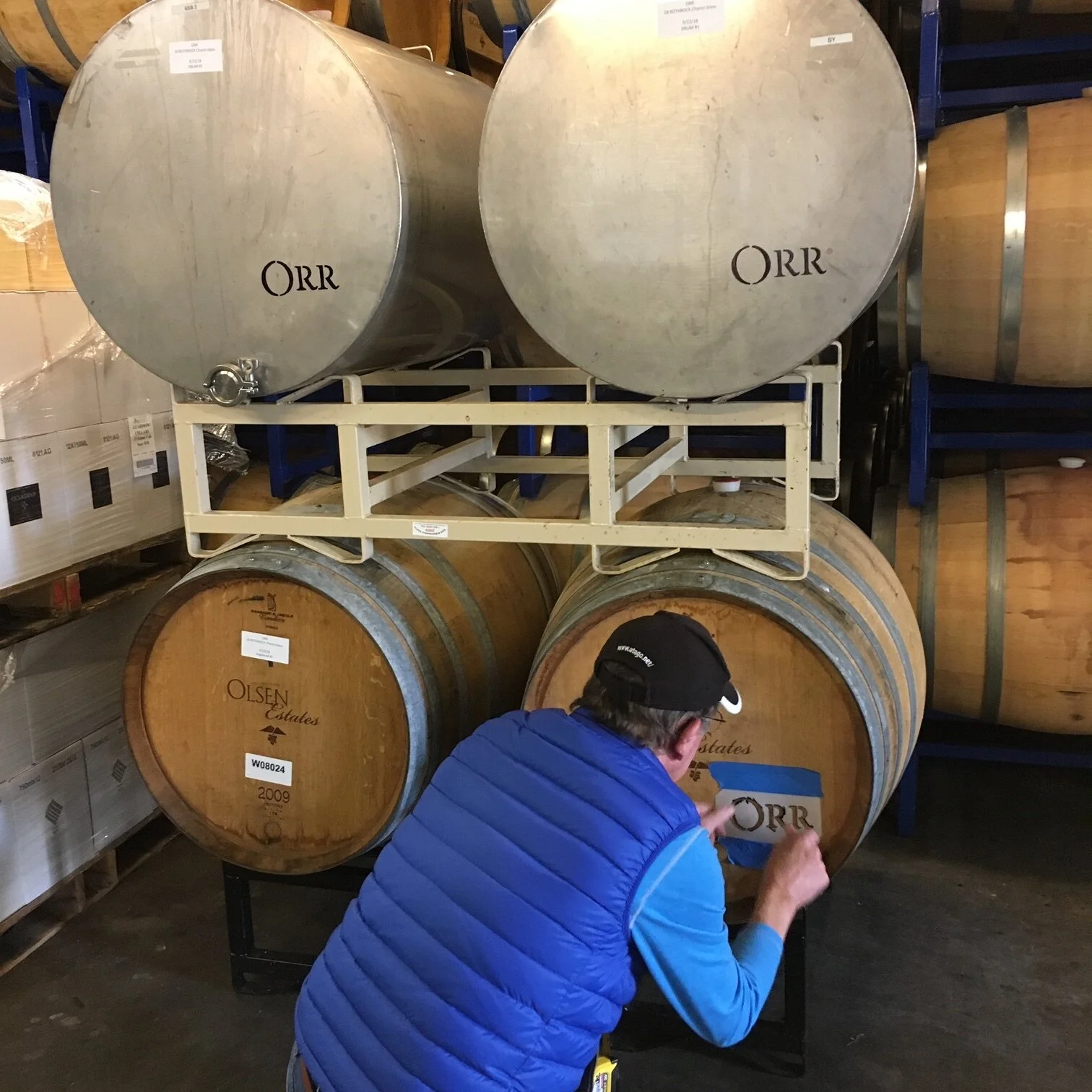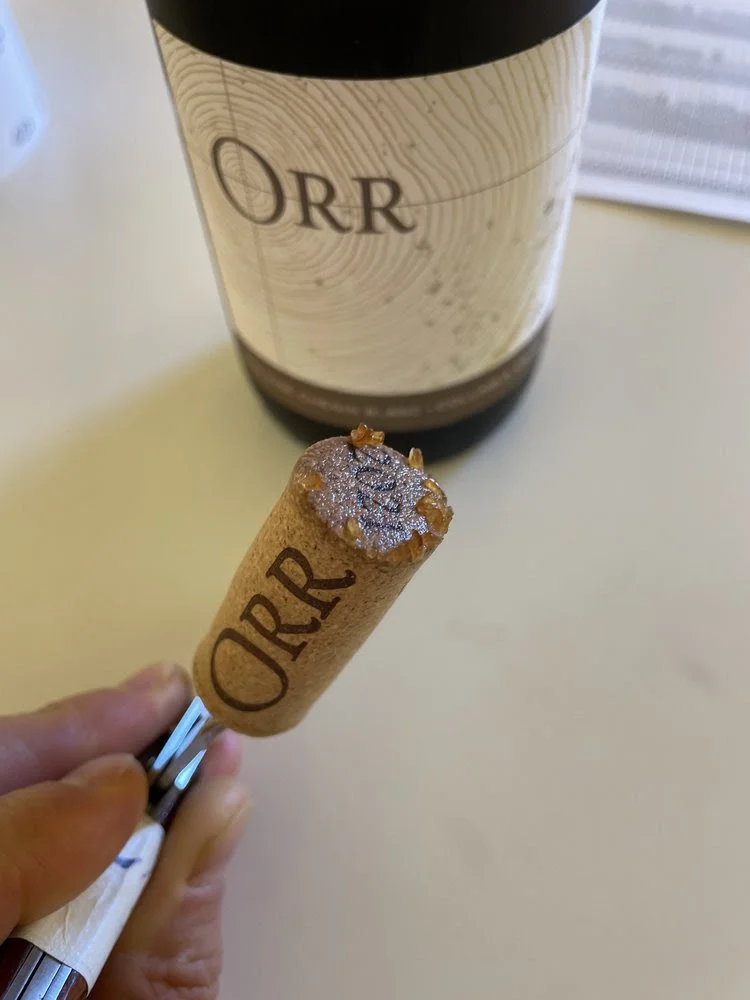How It's Made: Orr Chenin
We just pressed my first lot of 2025 Chenin blanc (!) which got me thinking it’s a good time to share how it’s made.
Harvest Decisions
The winemaker’s choice of vineyard is the most important driver of wine style. The varietal, clone, vine age, farming method, slope, aspect, soil type and microclimate are huge. Second most important is the date of harvest.
Sorting on site
I need my crew in the vineyard to select the best clusters while they are picking. Being there in person for the pick is meaningful, it shows I care and I think the crew does a more careful job when I am together with them? (pro tip: 80% of success is showing up but 78% of statistics are lies) I like to think the crew is incentivized by my morning regalitos of pan dulces and Costco muffins and my directions in baby-talk Spanish. “Solo quiero las uvas bonitas por favor”
The level of ripeness impacts wine flavors and balance. Picking early in the season results in lower potential alcohol and more acidity and the Chenin tends to show more “green fruit” like pear, honeydew melon, kiwi or greengage plum flavors. A later season pick means riper grapes, higher potential alcohol and lower acidity resulting in fuller-bodied rounder feeling Chenin wines with “yellow fruit” flavors like pineapple, Golden Delicious apple and yellow peach.
Labor issues are making machine harvested fruit more common. Despite recent advances in the harvesting machines which limit damage to the grapes, I still believe hand-picked fruit is superior. I pay a premium for hand-picked fruit from the Chenin vineyards I work with - Roza Hills, Upland and Holmason.
Destemmed Vs. Whole Cluster Pressing
I was trained to press entire white grape bunches whole rather than destem the fruit first. The downside to whole cluster pressing is it limits how many tons you can fit inside - whole clusters don’t pack as tightly as destemmed berries inside the press. The upside is that the juice coming out of pressed whole clusters is clearer, more delicate and less bitter because there is less contact between the juice and the skins. Our press run takes about 3 hours so we are motivated to fit as much into the press as possible with each cycle. A lot of winemaking is about compromises … there is a tradeoff between pressing gently to avoid astringency versus pressing harder to maximize juice yield.
Gravity Settling
I add sulfur dioxide to the juice at the press to inhibit wild bacteria and spoilage organisms. We pump the juice from the press pan into a tank to settle out overnight. The next day we pump only the clear juice into the barrels and drums for fermentation - this is called racking. The solids that fall to the bottom floor of the tank (little pieces of grape skin or dirt from the vineyard) can make the wine bitter so they are washed down the drain. At this point, I bring a juice sample back to the lab for my juice panel to analyze the Brix, titratable acidity, pH, malic acid and yeast assimilable nitrogen.
Native Yeast Vs. Cultured Yeast
Grape juice can spontaneously ferment because there are wild microorganisms in the vineyard and winery. There are a lot of words for this wild fermentation - native, indigenous, natural, ambient, uninoculated or spontaneous (pronounced schponteee in German/Sean Connery accent). My Chenin has been natively fermented since 2013. I actually studied indigenous uninoculated chardonnay barrel fermentations for my masters thesis at UCDavis. I feel strongly that the benefits outweigh the risks for my Chenin.
A commercially cultured freeze dried yeast strain will act more predictably and can be selected to emphasize certain flavors or aromatics. (FYI I inoculate my red fermentations - too much downside risk to go wild.)
My native fermentations are slow to start and tend to give off less heat - I feel like the resulting wine is more interesting as a result. Once I notice spritziness in the barrels (typically this several days after barreling down but before a measurable Brix drop) I siphon a couple gallons out and spread this active culture around to inoculate the drums and get this show on the road. Historically I have just “trusted the process” but now I have a microscope in the lab so I’ll be able to look at the yeast population! Based on the data from my juice panel, we feed the ferments vitamins and nutrients to set them up for success.
Fermentation Container Pros and Cons
The vessel in which a wine is fermented has another big impact on flavor and wine style. I like to use a combination to increase the complexity of my Chenin.
Stainless steel drums are considered to be inert or neutral fermenters and better retain fresh fruit flavors. I like to ferment in different sizes of stainless drum - I feel like the kinetics of the fermentation are slightly different with the different volume. The drums in the photo above are 100 gallon capacity. I also use 75 gallon drums.
Oak barrels have been used in winemaking since Roman times. The pores in the wood provide slow oxygenation. I use the same barrels again and again vintage after vintage. New toasted barrels contribute spice aromatics, smoky and vanilla notes; the neutral or used barrels I use add texture but impart little flavor. I ferment in 79 gallon hogsheads (Dad is stenciling two of them with my ORR logo in this photo) these were new in 2008. I also use “normal” barriques that are 59 gallons that I have purchased used from other wineries around town which were new in 2016.
There are a lot of other fermenter options out there including concrete eggs and terra cotta amphorae and large volume stainless steel tanks but for me, a combination of SS drum and old barrel is the best from a style and cost standpoint.
Clarity and Stability
In the spring after the vintage, we prepare the wine for bottling. Those of you who bought my Gresswell vineyard single hogshead bottling of 2021 Chenin with the watercolor label had an unfiltered version of my Chenin. Unfiltered wines preserve tiny particles in the wine that can contribute to flavor and texture (and haze). All of the other Chenin I have ever bottled has been bentonite fined, cold stabilized and sterile filtered.
Cold stabilization is what we call the process of chilling wine in tank to force tartrate crystals to form and precipitate out of solution. This crystallization would happen inside your refrigerator if we didn’t force it to happen in the tank before bottling. The crystals are not harmful and they look like shards of glass or rock candy. In the photo above, even though I had chilled the tank before bottling, crystals formed in bottle because my friend stored my wine in his cold fridge for several months. After the wine is fined, cold stabilized and filtered, I analyze it in the lab testing final alcohol, pH, titratable acidity, residual sugar, malic acid, acetic acid and free SO2.
Bottling
There’s zillions of things that can go wrong as we move the wine from tank into bottle and my goal is always for a super-boring no drama bottling event.
I’ve described my packaging journey several times (here on my blog and in Wine Business Monthly). I’m using DIAM 5s - this is a “technical cork” made using a patented process that involves grinding up natural cork bark from Portugal, cleaning the cork granules with supercritical CO2 to remove cork taint, and then molding the cleaned granules into a cylindrical cork shape. My glass bottles are made here in Washington.
Aging
I design my wines to be ready to go on release. I want them to be on restaurant wine lists right out of the gate. Personally, I like the freshness of young wine. So my recommendation is drink now but if you prefer to cellar them - you do you. Cheers!








